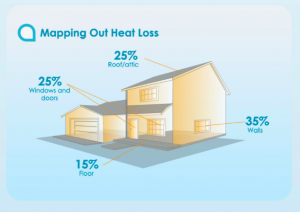
Home Heat Loss
Insulating your attic will help keep your heating and cooling from going through the roof and your wallet. Keep in mind that insulation can compress over time, become less effective and may need to be replaced. Adequate insulation will keep unwanted heat out of your home, reduce the workload on your cooling system and save money on your electric bill.
Grab a ruler or tape measure and a flashlight and go into your attic to measure the depth of the insulation at the attic entry. After measuring, use this guide as a rule-of-thumb to determine if more insulation is needed.
•Fiberglass (paper-backed blankets with the R-value printed on the blanket): less than 3.5 inches
•Fiberglass (pink or white with a loose or coarse texture): less than 5 inches
•Cellulose (gray with a fine soft texture): less than 3 inches
R-value measures resistance to heat flow through a specified thickness of material. The higher the R-value of insulation, the better. According to OUC, “unless the existing insulation is damaged, deteriorated or contaminated with mold or pests, it’s not usually necessary to remove the material before adding more insulation. New cellulose insulation can be installed over existing fiberglass insulation, and new fiberglass insulation can be installed over existing cellulose insulation.”
Most utility companies offer rebates and incentives programs to help cover the cost of installing recommended levels of attic or roof insulation. Typically, the request for rebates must be made within twelve months of installation.
You can use an online zip code insulation calculator such as the one provided by the Department of Energy to determine the recommended attic R-value for your specific region, age of the home, method of heating and home construction. http://web.ornl.gov/sci/roofs+walls/insulation/ins_16.html.
Although you could install insulation yourself with the proper protection and equipment, it’s generally recommended that you hire a licensed contractor who can recommend the type and value of insulation that works best for your home’s age and construction.
Buy Your Side Home Inspections has been inspecting homes and businesses in Central Florida, and specifically Osceola County, for many years. When it comes to serving St. Cloud, Kissimmee, Poinciana, and all of Osceola County, your home inspection satisfaction comes first. We are Buy Your Side every step of the way! For all your inspection needs, call 407.780.0911.
Read More
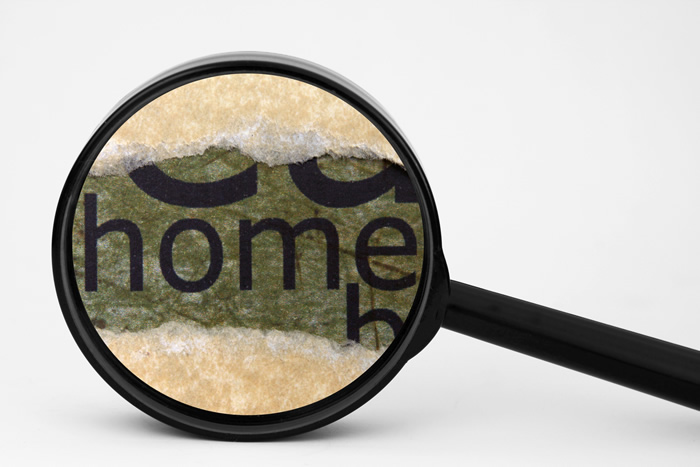 Most people don’t know how easy it is to make their homes run on less energy, with as many homes as I see during my home inspections, I assure you.. it is important, but not often very complicated. Large scale reductions in heating, cooling and electricity costs can actually be accomplished through some pretty simple changes, and most of which can be done by the home owner. Having Buy Your Side Inspections helping you to understand what energy saving possibilities exist can offset our modest inspection fee. It’s part of what we do as we inspect your home or business.
Most people don’t know how easy it is to make their homes run on less energy, with as many homes as I see during my home inspections, I assure you.. it is important, but not often very complicated. Large scale reductions in heating, cooling and electricity costs can actually be accomplished through some pretty simple changes, and most of which can be done by the home owner. Having Buy Your Side Inspections helping you to understand what energy saving possibilities exist can offset our modest inspection fee. It’s part of what we do as we inspect your home or business.
Why make your home more energy efficient? Here are a few good reasons:
• It saves money. It costs less to power a home that has been upgraded to be much more energy-efficient.
• The overall comfort of the home, especially as we transition from season to season in Central Florida.
• Many scientists now believe that excessive energy consumption contributes significantly to global warming. Without taking a stance on that subject – saving on energy use is wise for in Central Florida as our population continues to grow – the energy utilities are being maxed out in their capabilities affecting the cost and quality of energy for Central Floridians.
• It reduces pollution. Conventional power production introduces pollutants that find their way into the air, soil and water supplies. Upgrading your energy efficiency in your home is a major plus in many ways for sure.
Find efficient ways to heat and cool your house
• As much as half of the energy used in homes goes toward heating and or cooling. Ways that energy bills can be reduced through adjustments to the heating and cooling systems are things like installing ceiling fans throughout the home and by installing a programmable thermostat. A programmable thermostat can often save money by allowing heating and cooling appliances to be automatically turned down during times that no one is home and at night. Programmable thermostats contain no mercury and, in some climate zones, can save up to $225.00 per year in overall energy costs.
Install a tankless water heater
Demand water heaters (tankless or instantaneous) provide hot water only as it is needed. They don’t produce the standby energy losses associated with storage water heaters, which will save on energy costs. Demand water heaters heat water directly without the use of a storage tank. Therefore, they avoid the standby heat losses required by traditional storage water heaters. When a hot water tap is turned on, cold water travels through a pipe into the unit. Either a gas burner or an electric element heats the water. As a result, demand water heaters deliver a constant supply of hot water. You don’t need to wait for a storage tank to fill up with
enough hot water.
Replace incandescent lights
• The average household dedicates 13% of its energy budget to lighting. Traditional incandescent lights convert approximately only one tenth of the energy they consume into light, while the rest becomes heat. The use of new lighting technologies, such as light-emitting diodes (LEDs) and compact fluorescent lamps (CFL), can reduce energy use required by lighting by 50% to 75%. The life span of these lighting technologies is much longer than traditional lighting and saves on overall replacement costs as well.
Seal and insulate your home
Sealing and insulating your home is one of the most cost-effective ways to make a home more comfortable and energy efficient -– and you can do it yourself. A tightly sealed home can improve comfort and indoor air quality while reducing utility bills. During our normal inspection we may recommend fixes that will dramatically increase your home’s comfort and can affect energy savings. Every day I find home with windows that need to be replaced and doors that need to be upgraded and replaced. I also find in older homes that there is little to no upkeep or consideration given to tightening up exterior wise with caulk and weather stripping. Older homes need attention that newer homes MAY not. So, when I make suggestions about your home’s energy use, or that your home needs some outside attention, take it seriously. It may not just help your energy costs… it may affect how long your home fends off the weather and the effects of our central florida seasons!
Read More
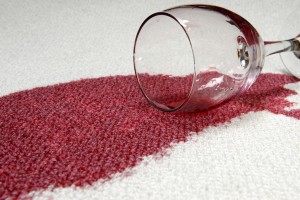
With the endless parade of celebrities walking the red carpet before the upcoming Oscars, it’s a reminder about the condition of your own home’s carpets. Can you carpets pass the “Red Carpet Ready” test? If you are thinking about selling your home in the near future, potential home buyers may be turned off by worn or stained carpet and ask for a reduction in asking price to replace the flooring before the offer or not make an offer at all.
The carpet in your home is a host for all kinds of unwanted materials including dust mites, bacteria, viruses, dead skin cells, mold, pet dander and of course – dirt!. Many of these conditions can contribute to allergies and health concerns. You can follow these simple steps to make sure your carpets are well cared for and maintained to help keep them as clean as possible.
- Vacuum Regularly. Carpets should be vacuumed at least twice a week with “high-traffic” areas vacuumed daily to prevent the buildup of unwanted materials. Areas with less traffic can be vacuumed once a week. It’s important to maintain your vacuum by replacing the bag often or cleaning the filter frequently.
- Remove Stains Immediately. Treat spills and pet accidents as soon as they occur to make sure they don’t become permanent. There are many professional products available to remove stains. If you want to go the natural route, a simple internet search can result in a number of homemade stain removal solutions as well.
- Professional Cleanings: As a rule, your carpets should be cleaned once a year by a professional service to get the best results under normal conditions. If you have pets or children, they should be cleaned more frequently.
If you are planning on buying or selling a home in the near future in Central Florida and Osceola County, we believe strongly that a full home inspection is a must! Having a full Home Inspection done by Buy Your Side Home Inspections will take all the guesswork out of buying or selling a home. Call Tommy Joynes of Buy Your Side Home Inspections at 407.780.0911 today!
Read More

Is Your Money Going Down the Drain?
Earlier this week we listed seven Hacks to Lower Your Electric Bill. (Read more here: 7 Easy Hacks to Lower Your Electric Bill). Below are 4 Water Guzzlers in your home and tips on how to lower your water consumption. According to the EPA, the average American family of four uses 400 gallons of water per day. On average, approximately 70 percent of that water is used indoors. The biggest culprit is your bathroom toilet, which guzzles about 27 percent of your water consumption. Low flow appliances and fixtures can help to lower that amount by as much as 30% depending on your location.
- Install Water-Saving Toilets: A standard toilet uses 1.6 gallons per flush and much older toilets can use as much as 3.5 to 7 gallons per flush. By installing a water-saving toilet which uses 1.28 gallons per flush or less. a family can reduce the amount of water used for toilets by 20 to 60 percent. By the way, did you know that a running toilet can waste about 200 gallons every day.
- Install a Low-Flow Water Faucet: A bathroom faucet generally runs at 2 gallons per minute. Install a low-flow water faucet and turn off the tap while brushing your teeth or shaving; that alone can save a person more than 200 gallons of water per month.
- Use a High-Efficiency Washing Machine: These washers can conserve large amounts of water. Traditional models use between 27 and 54 gallons of water per load, but new, energy—and water—conserving models (front–loading or top–loading, non-agitator ones) use less than 27 gallons per load.
- Shower Better with Low Flow Shower Heads: A standard shower uses 2.5 gallons per minute and also requires energy to heat the water. By replacing just one shower head with a low-flow fixture, the average family would save 2,900 gallons of water plus the amount of electricity needed to power the home for 13 days, and more than $70 in utility bills.
The EPA recommends WaterSense labels models which are certified to be high performing. They are available in many styles and price points, and some utilities even offer rebates.
You’re not only saving money, but should you decide to sell your home, these features are desirable by most home buyers. When you’re ready for a pre-listing inspection or just want to see how your home measures up, call Buy Your Side Home Inspections – Central Florida’s most-respected home inspection service. 407.780.0911.
Read More
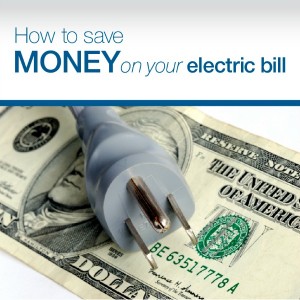
7 Easy Hacks to Lower Your Electrical Bill
Here are 7 easy and relatively inexpensive hacks you can do right now to lower your electric bill every month and not break the bank doing it.
- Turn Off Electric “Vampires”: Devices such as computers, small appliances, televisions, cable boxes, game consoles are sucking up energy even when they are not in use. Group your cords by location in your home and then plug the cords into a power strip that you can easily turn off when you go to bed or leave the home. If that’s too much trouble, programmable power strips are available at hardware stores for a minimal cost.
- Switch Out Those Light Bulbs: Besides turning off lights in rooms when not in use, compact fluorescent lightbulb are slightly more expensive than their regular incandescent counterparts but the return on the investment is huge and they last longer. Can’t afford to do it all at once, change bulbs one room at a time.
- Ditch the Switch and Dim That Light: Besides creating a mood, dimmer switches are easy to install and give you more options for lighting besides on and off. Make sure your dimmer is compatible with your compact fluorescent lightbulb. Newer dimmer switches will actually conserve energy when you’re not lighting the bulb at full capacity. Be sure to turn off the electricity first!
- Switch to Reusable HVAC filters: You’ll save money in the long run because your unit will be more energy efficient and you’ll extend the life of your HVAC system.
- Use Electricity During Off-Peak Hours: You will pay more for electricity during peak times because of the demand. Avoid using appliances and charging your techno gadgets during these hours. If you don’t know what your area’s peak hours are, you can call your local energy provider and ask. The peak hours vary by season, especially here in Florida.
- Use Slow Cookers, Pressure Cookers and Microwaves: The first one is slow and the next two are fast but they all use less energy than your range and oven.
- Get a Programmable Thermostat: You can program these thermostats based on your family’s needs and schedule. They are inexpensive at about $25 and available at your local hardware store.
Having a full Home Inspection done by Buy Your Side Home Inspections will take all the guesswork out of determining the condition of your home. When the inspection is complete, you will be advised of any problems that were discovered and we will discuss solutions or needed actions.
Call Tommy Joynes of Buy Your Side Home Inspections at 407.780.0911 today!
Read More
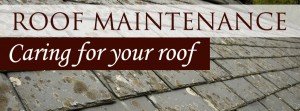
6 Tips For Maintaining Your Roof
Your roof is a major component of your home protecting the structure from all kinds of things that want to invade and damage the interior. At Buy Your Side Home Inspections, inspecting all the components of the roof is what we do everyday.
Here are 6 tips you can easily do to maintain and extend the life of your roof.
- Inspect your roof a minimum of twice a year (especially after major storms) from ground level using binoculars. Viewing your roof from a neighbor’s home with their permission can also be another vantage point.
- Remove excess debris such as leaves, sticks and any other material that may be caught inside your gutters.
- Trim tree branches to prevent them from hanging over your roof.
- Examine caulking around chimney vents and reseal if necessary.
- Repair and/or replace missing tiles or shingles before further roof damage occurs.
- Check skylight seals for leaks and reseal if necessary.
If your home needs a checkup, Buy Your Side Home Inspection will ensure that your home is in top condition or let you how to get it that way in the most financially sensible manner. Call Central Florida’s most respected Home Inspection Service. 407.780.0911.
Read More







Follow Us!